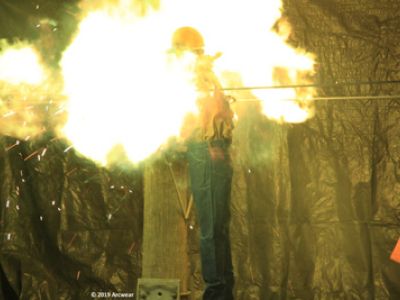Zarheer Jooma, P.E., and Hugh Hoagland

Zarheer Jooma, P.E., and Hugh Hoagland

Arc Rating Standards for Personal Protective Equipment
Employees who interact with electrical equipment and electrical installations may be exposed to electrical shock and arc flash hazards. A previous two-part article titled “Arc Flash Considerations for Utility and Construction Activities” (see https://incident-prevention.com/blog/arc-flash-considerations-for-utility-and-construction-activities and https://incident-prevention.com/blog/arc-flash-considerations-for-utility-and-construction-activities-part-ii) discussed the electrical hazard identification and risk assessment. If the employer has taken steps to reduce the risk of […]

Arc Flash Considerations for Utility and Construction Activities: Part II
This article concludes a two-part discussion of protection strategies against arc flash and shock hazards. Here you will read about two topics: (1) arc flash and shock hazard labeling for industrial, commercial and generation facility electrical exposures, and (2) methods used to determine the level of PPE required. The previous article (see https://incident-prevention.com/blog/arc-flash-considerations-for-utility-and-construction-activities) mentioned that […]

Arc Flash Considerations for Utility and Construction Activities
Electrical safety-related work practices are governed by different OSHA regulations for utilities and construction companies. Utilities follow 29 CFR 1910.269 and construction companies follow either 1926 Subpart K or 1926 Subpart V, depending on the job site. It wasn’t until the 1910.269 revisions in 2014 that OSHA used direct wording mandating arc-rated clothing. And while […]

